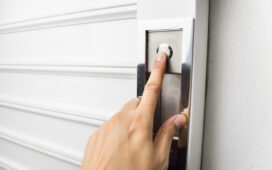Liverpool has a long history of being recognised as a dynamic, multicultural city with a thriving music scene, a rich cultural past, and a passion for football. But in recent years, Liverpool has also become a popular location for investing in student housing, drawing the interest of buyers from around the globe. It’s understandable why so many people are gaining interest in this bustling city, which boasts a flourishing student population and good rental returns.
The UK has 2.66 million students enrolled in higher education for the academic year 2020–21, according to data from the UK Parliament. Approximately 30% of those individuals reside in privately rented housing. If you’re looking to get in on the action, Leaders letting agents in Liverpool is one of the UK’s premier estate agents, with more than 100 branches across the country offering a host of property services.
Here are some helpful insights into the world of student property investing in Liverpool, whether you are an experienced investor searching for your next opportunity or a first-time investor trying to test waters in the real estate market.
How Is Student Housing Profitable?
An investment in student housing generates profits in a manner similar to that of a typical buy-to-let. Students who rent from landlords are given access to their properties to reside in.
After paying the property’s mortgage with the rent, the landlord often keeps the remaining funds as a source of additional revenue. The rental return and any monetary profits on the house are the two major ways that landlords profit from student housing.
Rental Return:
The percentage of profit the landlord makes from their rental asset is known as the rental yield. The difference between the entire cost of the asset and the rental revenue earned from it, calculated as a percentage, is basically what is meant by the term “rental yield.”
Calculating rental yield involves dividing annual rental revenue by the property’s entire cost, which includes any remodelling or other expenses, and multiplying the result by 100. Majority of the landlords strive for a return on investment of at least 7%.
Growth In Capital:
The amount by which the property’s worth improves throughout the period you possess it is referred to as capital growth. A simple sum can be used to calculate the capital growth of your property.
By deducting the purchase price from the current worth of the property, you can first determine how much its value has increased. Following that, divide the value rise by the purchase price and then multiply the result by 100. The amount you obtain represents the capital growth of the asset as a percentage.
Is It Profitable To Rent To Students?
Student housing at times can be an investment that is more profitable than a typical buy-to-let, however, renting to students is not without its own difficulties.
The size, location, and general condition of the property all affect how profitable your buy-to-let is. Landlords can often demand higher rent when renting out specific bedrooms to students rather than the entire property.
Location is crucial when looking for buy-to-let student apartments. The rental return often improves as a property gets closer to the university campus. If a home contains additional common areas, it could be more lucrative to convert one of those spaces into a bedroom rather than maintain numerous living rooms.
The Benefits And Drawbacks Of Investing In Student Housing:
Most of the same advantages that apply to landlords of traditional buy-to-let properties are also available to those who rent out student housing. The cost of properties have been continuously increasing for a while now, despite the fact that the real estate industry is constantly subject to change. Investors in buy-to-let properties, notably student housing, can profit substantially from capital growth if they keep rising.
Due to the present housing crisis in the UK and growing real estate costs, landlords can now charge more to rent out their houses. You should carefully consider the benefits and drawbacks before choosing whether purchasing student housing for rental purposes is a viable investment for you. Consider the following important student buy-to-let benefits and drawbacks:
Benefits:
- In great demand – Private student housing is usually in high demand, especially if it is adjacent to a university campus. Finding renters is often not an issue for student landlords.
- Increased rental yield – Student residences often have a greater rental yield than typical buy-to-lets since student landlords can charge by the bedroom.
- Cost-effective homes – Student housing usually tends to be found in inner-city areas and in student suburbs, where buying a home is typically less expensive.
Drawbacks:
Necessitates extra upkeep.
Demands a more advanced degree of management.
A reduced or no rent period throughout the summer or holidays.
Becoming a student landlord requires more setup and management.
Compared to other categories of rental properties, student housing is subject to more regulation. This is so that they may fulfil their responsibility to take care of their tenants, who are generally youngsters. But with the right assistance and guidance, landlords can understand these regulations and make sure that their homes are secure and in compliance.







